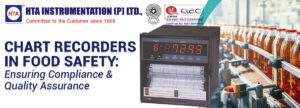
Sound Level Calibration in Live Events: Ensuring Clear and Consistent Audio for Audiences
In the world of live events, be it concerts, conferences, or festivals, delivering an impeccable audio experience is paramount. The success of any event is

In this blog post, we’re set to unravel the secrets behind mastering the calibration of your light intensity meter – a crucial aspect often overlooked in the pursuit of accurate readings. Join us on this journey as we explore not just the ‘why’ but also the ‘how’ of calibrating your light intensity meter, ensuring that your measurements stand as beacons of reliability in any application.
Why Calibrate Your Light Intensity Meter?
Calibrating your light intensity meter ensures that your measurements are accurate and reliable. Precision is crucial, especially in fields like photography, horticulture, and environmental monitoring, where even the slightest error can lead to significant discrepancies.
Different environments can impact the performance of your light intensity meter. Calibrating it regularly helps maintain consistency in readings, whether you’re measuring natural sunlight, artificial light sources, or a combination of both.
Many industries have specific standards and regulations regarding light intensity measurements. Calibrating your meter ensures that you meet these standards, whether for compliance purposes, quality control, or certification requirements.
How to Calibrate Your Light Intensity Meter:
Now that we understand why calibration is crucial, let’s walk through a simple step-by-step guide to calibrate your light intensity meter:
Begin by consulting the user manual provided by the manufacturer. This guide usually includes specific instructions on calibration procedures and recommended intervals.
Ensure that the light source you use for calibration is stable and reliable. This could be a calibrated lamp, or another recognized light standard.
Choose a controlled environment with stable temperature and minimal ambient light. This reduces the impact of external factors on the calibration process.
Zero calibration establishes a baseline reading when no light is present. Follow the manufacturer’s instructions to set your meter to zero in the absence of light.
Use the calibration light source to adjust the meter’s sensitivity. Record readings at various intensity levels to ensure accurate measurements across the entire range.
Repeat the calibration process periodically, especially if your meter is exposed to different conditions or experiences a significant jolt. Keep detailed records of calibration dates and results for reference.
Conclusion:
Calibrating your light intensity meter is not just a technical requirement; it’s a commitment to precision and reliability in your measurements. At HTA Instrumentation Pvt Ltd, we understand the importance of accurate data. Follow our guide to ensure your light intensity meter is calibrated effectively, unlocking the full potential of your measurements.
For more insights into instrumentation and measurement accuracy, stay tuned to our blog for upcoming articles. If you have any questions or need assistance with your instrumentation needs, feel free to reach out to us. Remember, precision starts with calibration!

In the world of live events, be it concerts, conferences, or festivals, delivering an impeccable audio experience is paramount. The success of any event is

In the realm of industrial automation, PID controllers play a pivotal role in maintaining precision and stability in various processes. As a leading player in

In the ever-evolving landscape of industries, maintaining optimal conditions for storage and transportation of sensitive products is paramount. Temperature-sensitive goods, such as pharmaceuticals, biotechnological products,

In the dynamic world of food safety, maintaining compliance and ensuring quality assurance are paramount for businesses. One integral tool that plays a crucial role
